At Thale Noi Benita and I bought two hammocks for 100 Baht each, about two pounds. Slack jawed with disbelief, the old lady at the shop handed over two of them, green and blue. They are now slunk on the patio next to me after a furious debate about the best way to string them up so that I wasn’t actually resting on the floor. So now this is where I do my work.
This week we’ve been light trapping.
The setup consists of a perspex disc, sheltering the papery wings of the moths caught and also the electronics, a stand holding the fluorescent bulb and a bucket beneath, containing an inverted cone which functions like a fish box, letting moths in but shaped to prevent them from leaving. Inside the bucket there are strips of a vaporizing insecticide, which kills the insects that enter.
These traps are placed at specific plots in the forest in order to gather as a wide a sample as possible, representative of the overwhelming insect biodiversity here in the Thai rainforest.
The traps are set on a timer, so with the setting of the sun, the lonely bulb will flicker into life, alone in the forest beneath a canopy of stars and branches. Moths, flies and other species of insect will flock toward the solitary light. But why do so many insects seek out light at night? What makes it so attractive? They fling themselves at the bulb, again and again, growing up in the tropics, I’ve seen moths fly into campfires and actually set themselves ablaze, so where does this suicidally strong urge stem from?
Insects evolved in a time where the only two point of light in the world were sunshine and moonlight. On an evolutionary timescale, these pinpricks of human light have popped into existence and now pepper the surface of the planet, as streetlights worldwide now tint the night sky in their amber glow. The truth is, many hypotheses have been put forward to explain why this is, but none of them have really stood up to scrutiny. One of these was that infrared wavelengths of light emitted by fire is in the same spectrum as those emitted by pheromones, the chemicals emitted by organisms usually to send chemical sexual signals, actually produce a form of light, they glow. This has been hypothesized as a method by which male moths locate their mates. However this was more or less disproved, as ultraviolet light is much more of an attractive wavelength, and this does not act as a sexual signal at all.
In actual fact, almost every organism emits a very faint glow of infrared light or radiation, which thermal imaging cameras can pick up to find sources of heat under the cover of darkness. A huge diversity of animals have evolved ways of sensing this, the Jacobson’s organ on snakes for example have evolved to pick up on this, allowing them to hunt in total darkness, mosquitoes use directional organs on their antenna to help them find prey at night.
The environment around us is illuminated across a huge range of the electromagnetic spectrum, and we have evolved to perceive only the smallest fraction of this, whilst other animals have a wider, narrower or altogether different perception of their surroundings according to how they absorb these wavelengths. This is another part of biology that completely bewilders and fascinates me, that we see the environment not as it ‘is’ but through the stained glass of tiny chemical reactions happening inside the cells of our body. To us, a fluorescent bulb may just another point of artificial light, but through the eyes of an insect it may be something far more beautiful and alluring.
The next day we went into the field with Pitoon and Dr. Sofia Gripenberg, a community ecologist from Oxford University and co-supervisor of the project studying forest dynamics through measuring seed predation. We went out to the forest plot at around 10 in the morning and found our way to the first litter fall trap.
These traps collect everything that falls from the trees- seeds, leave, twigs and sometimes whole branches which can obliterate the traps completely. Armed with a map, compass and a foolishly optimistic sense of direction, Benita and I split into one group and Pitoon and Sofia made up the other. The forest is really dense, trees are staggered together and climbing palms or rattan palms as Janya later explained, with their stupid spiny tentacles weaving throughout the itchy painful tapestry of the undergrowth, scoring my neck as I hauled myself through the undergrowth. When you can find traces of a path, your feet are forced to an awkward shuffling hopscotch as you try to avoid the sinewy streams of ants, flowing along the ground across leaves and the anastomose roots of dreadlocked fig trees.
We went to each trap and read out the serial numbers of trees that surrounded them, scrambling around to read the flimsy dog tags clipped to their trunks. The trees had been identified but we needed to clarify which species would drop seeds into the traps. Once this was done, we looked at the map and readied ourselves for the Russian roulette of reading the next compass direction. Sod’s law was working in full force, as each time we got to the top of a hill, or clawed through bamboo designed by vikings, the compass would always point, with a contemptuous glint, to an even more spiky, itchy, steep and slippery chunk of jungle.
Every now and then the landscape would open up, and arriving at the trap would reveal a viewpoint across the valley. A massive ficus blocked the way at one point so had to climb up the trunk and around, brilliant fun. Other times the only way was a slippery rocky canyon, with huge boulders slotted into the gap, we climbed up these and back onto the path, this is the best work you can imagine, hauling yourself up with vines and rocks onto the trail in the rainforest, the kind of stuff I’ve always wanted to do. I kept thinking about this and the fact that after this I’m headed to do more of the same in Borneo. Beardy, itchy and sweaty and emaciated, its still fantastic to work in the jungle.
We found an insect that looked unreal, more like a fossil than anything else- anyone know what it is?
Coming back to the bike we found a stick insect the size of my forearm.
Crossing a waterfall with Yun the next day we came across this guy. Yun pointed it out immediately, while I gazed dumbly ahead trying to see what he was talking about. When I finally realized that the vine draped along the rocks had a tongue I asked him if it was poisonous. “Yeah. Dead.” That was clear.
With work finally over we began our stagger back to the car park at the field site. On the way I saw a lizard on the trunk of a tall tree. I have a knack for catching lizards so I crept up to the trunk. It flew away. My mind haemorrhaged with the effort of processing this logically.
It was a hell of a day out in the field but when we got back we met Dr. Sarayudh, the scientist who originally founded the forest monitoring plot here with the Smithsonian. We chatted about the plot and the other one’s all over Thailand, and he went to talk about how useful it would be to map the plots with the drone, which stirred me because it meant that I could actually make an impact in the project, rather than simply have a fleeting visit. Which leads me onto another fantastic surprise I had after getting back from a long, sweaty day in the field.
I had crashed the drone earlier in the month, flying into the tree and bending a bar on the gimbal, the arm that holds the camera steady during flight, without which the image would be shaky. When I got back I found my dad had sent a replacement of the part, along with a spare battery, a copy of the Sunday times and a huge array of shampoos. Its very strange to open a box and read the signatures of someone you know like that. The unpredictability of the kind of things my dad sends me has always been his trademark. During sixth form boarding school in Canada he sent me drawings and fleecy clothes for the cold weather. In university he once sent me a monkey skull he had found in the garden in Barbados, that was a surprise. It was fascinating to see, but it stopped me in my tracks when I was walking back to the house. It wasn’t so much what he was sending me that was great, but the familiarity of unknowing was such a great reminder when I cut the box open. Still, it was fantastic to have the new part and cheered Dr. Sarayudh, the founder of the monitoring plot here and several others across Thailand, when I showed him the working drone.
We discovered that Cody is in fact a girl.
The next day we went to the Khao Pu Khao Ya National park, a huge semi-circle of rock created by two neighbouring mountains that gave the park its name- Grandfather and Grandmother. Pitoon, Sofia, Benita and I drove there after work, watching the fascination of landscape slip by as we talked. A massive snake draped across the road, a dog that had been hit by a car, limping away, another dog that stood in front of the truck, in the middle of road, making us swerve out of the way, rubber plantations cushiony ramshackle houses in grey-green against the lime green landscape. Limestone cliffs gleaming like bleached teeth through the forest, colourfully painted concrete houses pixelating the sea of rice paddies.
When we arrived, the canopy of trees swarmed in, and it got visibly darker as the road into the park cut further into the trees. I was very nervous, as we planned to fly the drone here, my first flight since I crashed it. We met Pitoon’s friends at the park and I walked out to an opening in the trees where we could launch without the risk of getting tangled in leaves. The park was beautiful to walk through but to see it from the air was staggering.
It hasn’t been viewed before this way and its incredible to see trees can differ when they are seen this way, rather than looking up as they loom down on us from above, we can drift over the tops of the rainforest like a coral reef. This way we can look at a tree in a different way, as an organism unique amongst the others, as creating this distance between the camera and the trees brings with it an unusual intimacy, allowing you to seeing the entirety of these huge things of the forest, regard their facets delicately, like a jewel. When the lens reaches into the sky, a personality emerges in the treetops. This is the first time, since having the drone that a flight has shown the true pragmatism of its use, in the realm of ecology, this camera in the clouds presents an immensely powerful vantage point.
After the flight we went into the cave at the park, and had a Pan’s Labyrinth like run-in.
The next day we headed to Thung Kai Peninsular Botanic Garden in Trang, on our way to the beach and the hot springs. The twelve of us were stacked in the cab and the back of the truck and had no idea how far the drive was, but Pitoon mentioned something which made my ears prick up before we left. “Be careful, they have lots of vipers here.” We went to see the canopy walkway which stretches through the forest next to the botanic garden and the collection of forest plants that have been catalogued over the years. It didn’t disappoint, it was great to see the forest from the height in the forest, but at the same time I had to consider how much of the forest would have had to be destroyed in order to build it. But still a cool vantage point.
The vipers however weren’t as impressive, almost cute.
We walked around the side of the café and I saw a familiar sight, three monkeys huddled together in a small cage. It sounds kind of condescending to call Thailand a developing country, but the mistreatment of animals is a running theme in the developing countries I’ve visited, it links back a bit to the quote by Gandhi I read many years ago, ‘thw greatness of a nation and its moral progress can be judged by the way its animals are treated’. And this has always been something I have taken into consideration about people and places, as hurting animals seems like the most infantile expression of pain and frustration, acting out our aggression on something that can’t respond or complain, even though its plain to see. The cage was about 2 X 3 m and the ground was simply concrete and torn plastic shreds were littered on the ground. One large male had a cord tied around his neck, giving him a radius of less than 1 m where he was tied in the corner.
The guide who had been walking with us approached, smiling blankly. She spoke English as she had been talking to Sofia on the way, so I asked her, “why is he tied up?”
“He’s a big monkey! Local species.”
“Why is he tied up? The cage is tiny, and there’s three of them in it. So why does he need to be tied up?”
“Oh that one? He is aggressive.”
I looked over at the tired old macaque being groomed by a smaller juvenile.

“He doesn’t look aggressive Why don’t you separate them if he is?”
The cage next to them was bigger, though by no means large, and housed two albino rabbits, their mangy bellies pink against the concrete.
“We can not.”
She drifted off, still smiling sweetly and laughing about something in Thai, leaving me clenching my fists until my nails cut into my palms.
It makes me incredibly angry to see this kind of treatment and the apathy it breeds in people that have come to see the park, accepting that this is the way animals can be treated. I understand that conservation is focused at the habitat and species level, and that individual animals, unless they are from very small populations, are usually not the specific target of effort. But this kind of treatment just breeds and a feeling that these animals are less than sentient, whilst the sad hollowness in their eyes that this treatment has caused is plain to see.
I walked off to the carpark and grabbed an ice tea with the guys in the back of the truck. I sat for a while eating guava and looking at the grass but after about ten minutes got up and went back. Another, smaller monkey was in a nearby cage. It was about five by two feet and the monkey was hunched on a wooden beam, a single curled foot draping through the metal grid. I touched a toe experimentally and it didn’t even look up. Its eyes just remained fixed on some point past both me and through the bars of the cage. I took pictures of the litter strewn floor of the cage and the water bucket. It was disgusting, full of watermelon and leaves, frothing slightly at the surface. I went to the woman sat at the table inside the shack and pointed to the water bucket.
“Nam.” I said, stony faced. She smiled and laughed in confusion, I pointed to the water bucket and mimed chucking it out.

She got up, and with a smiling face of miscomprehension, followed me to the cage. I pointed to the foul bucket, fizzling with decomposition and looked back at her. He smile dried and she nodded. It turned out she didn’t have the key to the cage and instead had to poke her fingers through the wire to lift the pail. When she managed to tip it out the bottom revealed mud and a rather large stone. I glared through the process, trying not to say anything. Joe was walking by and I asked him what Thai was for clean, I’ve forgotten it now, but repeated it in reference to the water and watched as she refilled it fresh from the watering can.
So as beautiful as the walkway was and as much forest as they are protecting, animal abuse is happening here. I’ve heard that in some ways it can be a trade off, bringing in people who do not have the patience to see animals in their own habitat. I disagree, as any conservation group trying to promote awareness about the diversity of life present has a responsibility to the public not to portray in a light that promotes apathy toward its wellbeing. So if you are reading this and looking to go to Thailand on a trip, please avoid the Thung Kai Peninsular Botanic Garden in Trang, because as long as they keep animals this way, your ticket will be directly funding the abuse of wildlife the park was created to protect.
We piled back into the car, or rather Sofia, Benita and I got into the air conditioned cab, whilst the guys sat in the back, drinking whiskey as the sun beat down. We drove to the beach, in between limestone cliffs and oil palm fields. After a huge lunch on the beach, rain pelted down and we hurried inside a restaurant where I promptly fell asleep, while the tilted plastic umbrella steadily filled my lap with water.
When it was time to go, the rain was pelting down with such ferocity that it stung my cheeks as we cluttered to the truck. In the shuffle to get inside the truck I ended up inside the cab rather in the back with everyone in the rain. There was no space left in the back and I sheepishly got in the dry. The rain hammered down on everyone outside, and Sofia watched as they drank whiskey, tried to light cigarettes and laughed so hard we could hear them through the wet glass.
We eventually got to the hot spring, and piled out of the truck, marinaded in the musk that comes from wet clothes in hot, stuffy rooms. The cold post- rain air came as a sharp relief when I plunged out and we raced to the plumes of steam curling up from behind the characteristic clunkiness of the concrete government building. This is the trouble with putting time between the experience and writing as now all I remember is the smudgeness of it, and the salty brown clay smell of the water. Slipping into the water, the heat curdled my sour mood after being cramped in the steamy truck and fingers shrivelled to little bleached prunes. After a boiling soak, I figured I’d take the drone for a flight, as I had brought it all this way. I was nervous, as this was still soon after my last crash, and the familiar tingle of nervous radiated down my kneecaps as I pushed the throttle up and the little robot whined into the air. It was fantastic to fly around here, as the fog was descended over the landscape to such an extent that it felt like an old photograph, with veins of mould curling over the contours of the image, putting a camera in the sky above it felt like I was given an opportunity to twist and play with this delicate, humid filter. I flew for about ten minutes, landed, switched batteries and handed the controls over to Sofia. Its nerve wracking to fly the drone for the first time, with no idea of how responsive and quick it can be, afraid of looming limbs of trees, lurching out with their sneaky tendrils to ensnare and crash it. However her flight was fantastic and very smooth, so I put it on youtube.
I’ve been flying the drone almost every day over the past week, the actual experience only lasts about an hour at most and you are sucked into the moment to such an extent that it feels like a dream when it finally touches down onto the ground again. I only realize how much I’ve been flying when I get back into bed and my neck aches with stress of peering skyward.
My plan when I came out here was to fly above the forest plot and take a series of pictures, stitch them together and make a map of the forest plot. One thing I hadn’t realized was the sheer number of variables involved in making this work. The number of satellites, wind speed, rain, angle of the sunlight, height of the trees and visibility of drone against the sky, as well as the hundreds of other concerns that whisk my mind into a frenzy and make my fingers shake each time the ritual throttle-pushing blasts the cicada whine into the air. In a TED talk by Lian Pin Koh, a conservation sparking the movement of using drones in ecology, he said that you launch the drone, and then have a coffee and wait, or just worry. I worry but it feels justified, as it feels like, in a pretty dry metaphor- an investment, your sending it up to see something that no one else has seen before, and all the money, time and distance is out of your hands and up in the air.
Pitoon and I went to a spot on the waterfall close to the plot, where there was enough of an opening between the trees to fly the drone up and over the forest. After scrambling over the rocks and through the water, we prepped the drone and waited for the GPS to activate so that the autopilot would work. It never did. So we walked back to the parking lot, where it was more open, but farther from the plot. I launched it over the trees and the autopilot was ready, but the waypoints on the flight path refused to load, so we had to bring it back and thought we may as well try it somewhere else, for fun more than anything. Once again, it rose into the air with its familiar pulsing snarl. The autopliot sprang into life, and the drone began its path over the forest, or more correctly, over the river where we now were. It flew about 100 yards on this course and the autopilot failed. With it, I let out a gurgle of fear as the drone suddenly dropped. I switched it back to the manual mode and it recovered, but I knew that this was too touchy and a system to use over the expansive chaos of the jungle here. Failure stained my palate as we drove back with the drone, like a reprimanded puppy, sitting silently in my lap. I tried it again the next day with Pitoon, this time with a new, hopeful and elegant solution.
I tied it to a stick.
Even in the big open space of the palm garden where I was flying the drone, the autopilot failed after about 100 yards, so I switched it off and engaged with the joy of flying manually, reaching out over the tops of feathery distant trees.
I set the camera to take a picture every half second and had 2048 photos by the time I was finished. Here’s a sample from the top of the primary forest here.
Even if it doen’t work as it said it would, its still one hell of a tool. I tried stitching the images together on different programs to get an image of the landscape as a whole, as I intended two in the first place. I tried one program, crashed, another crashed after uploading one picture. Tried an online program, got this. I think its fair to say that more work is needed.
So I’m postponing the trip up north to map the other plot, at least until I sort this out, which honestly sucks, but I’m learning a huge amount about the impracticality of this stuff too. The learning process continues.





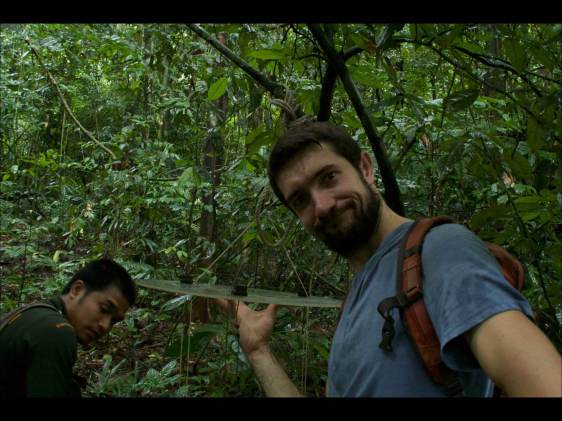



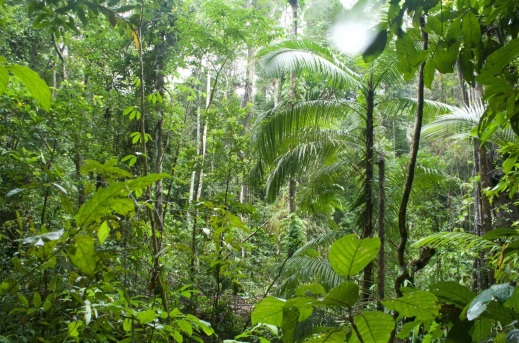

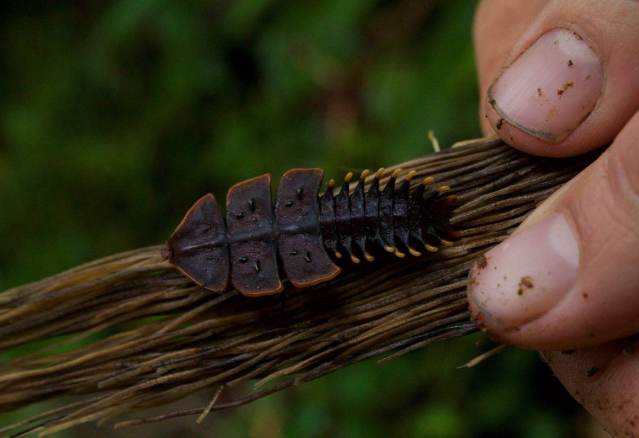

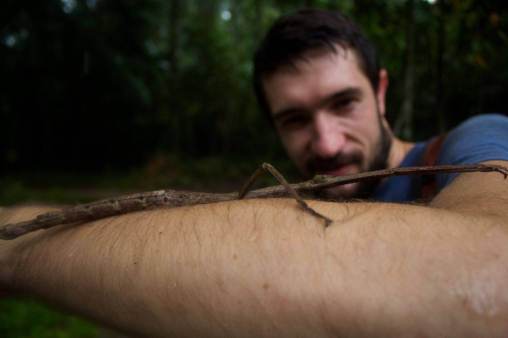





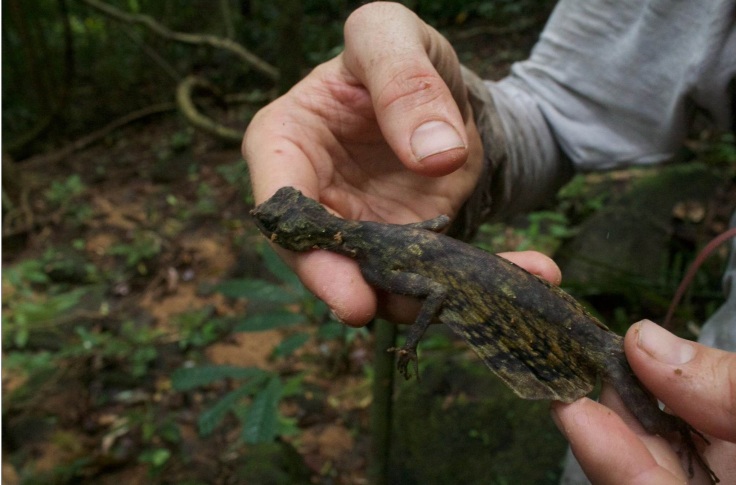
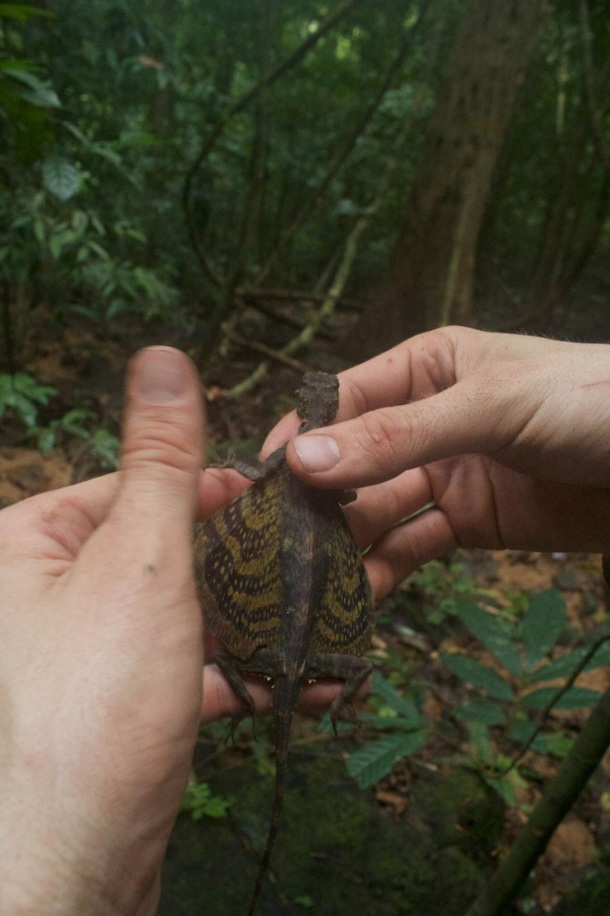
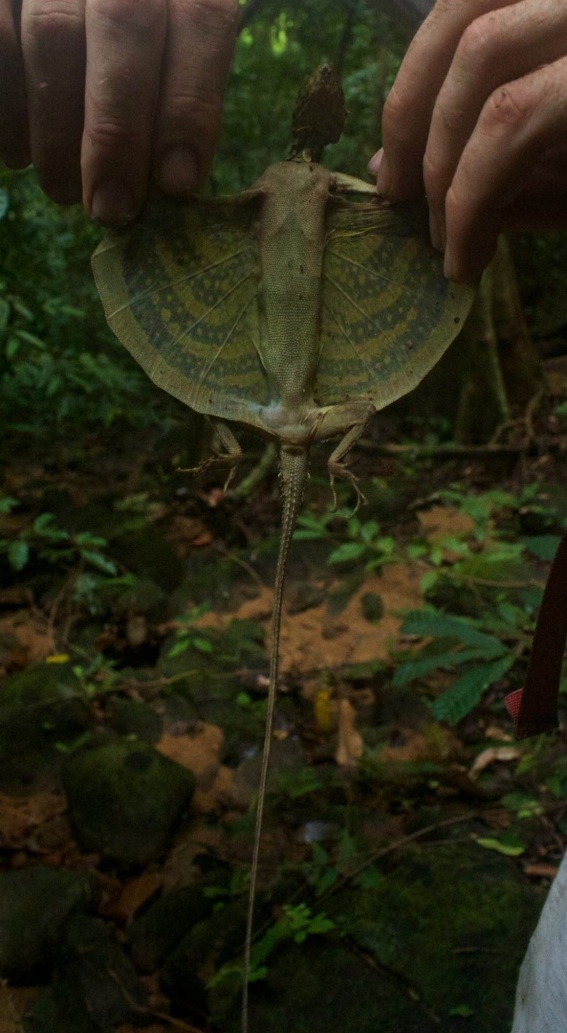
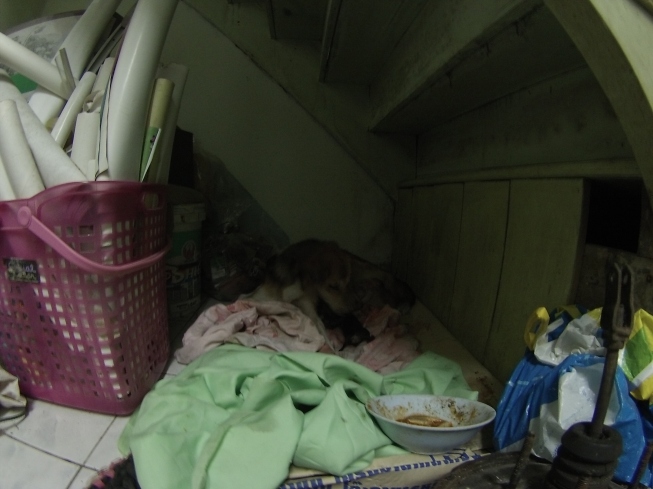


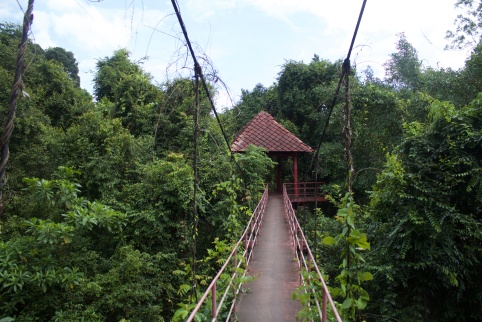
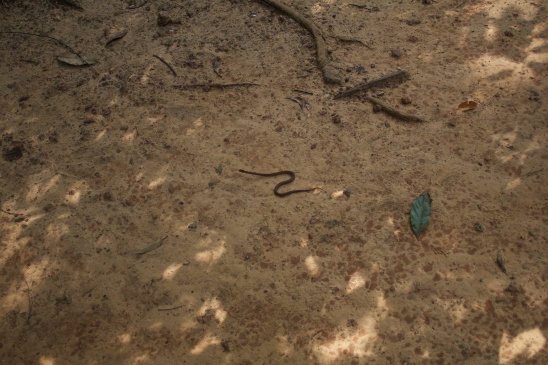



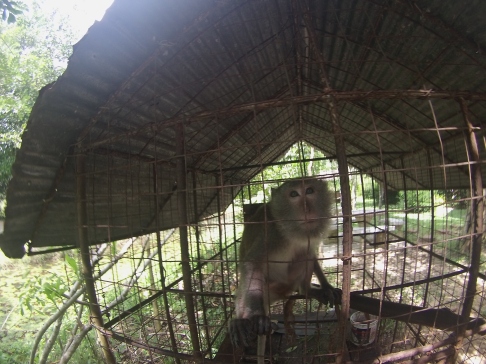






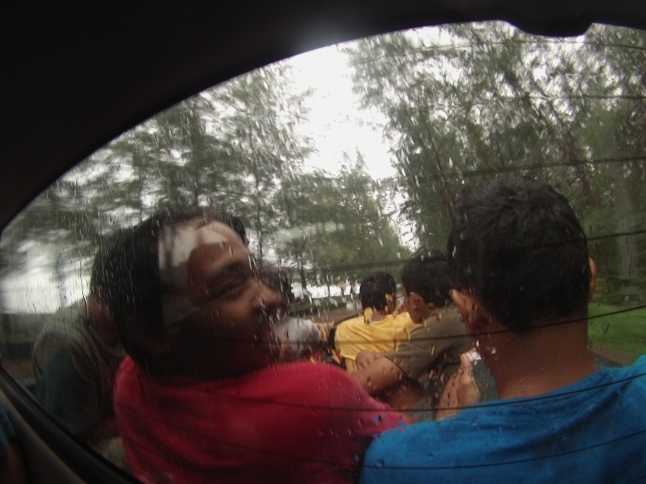
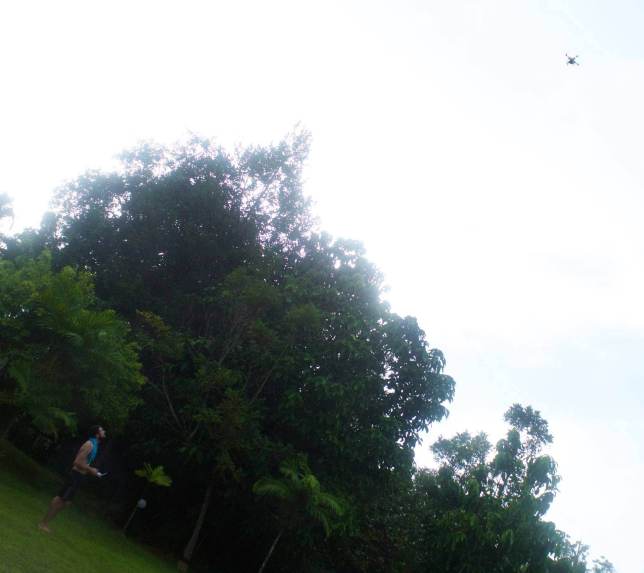







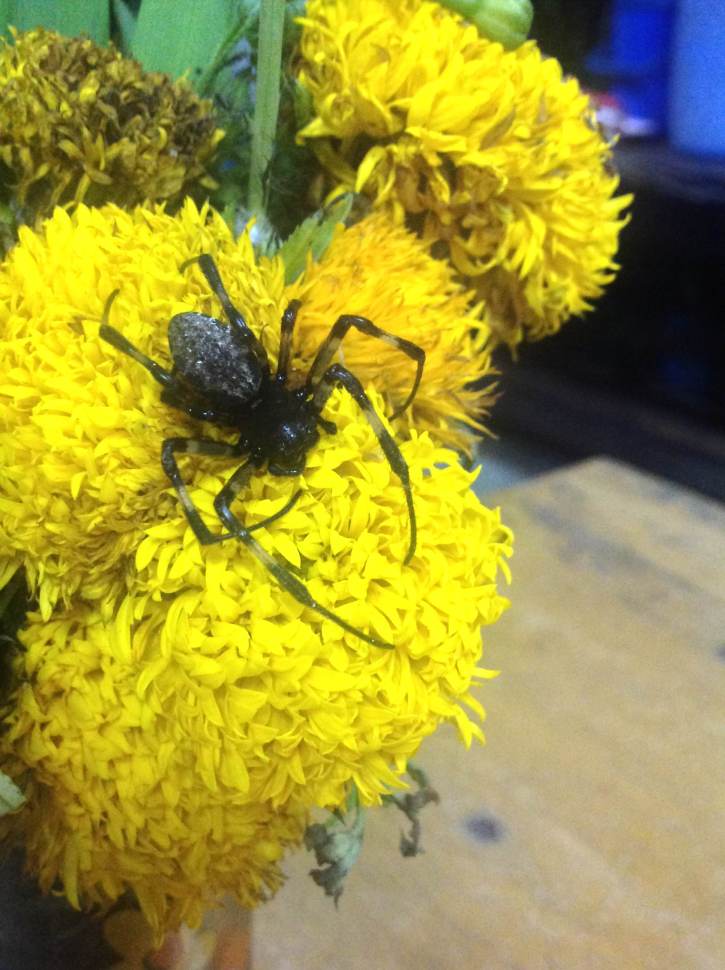




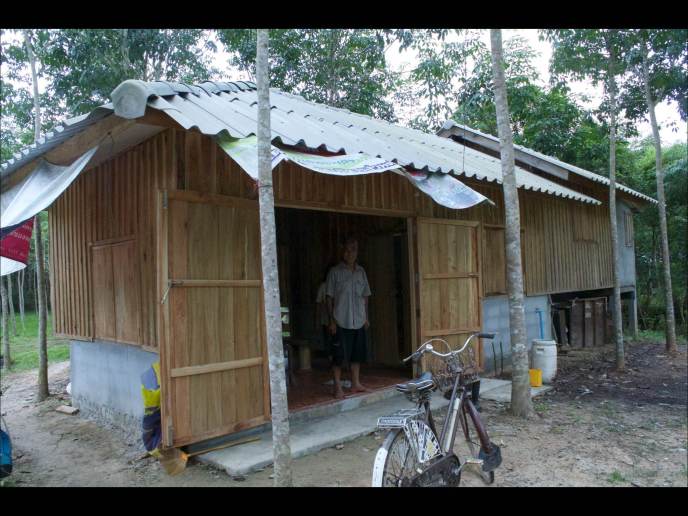


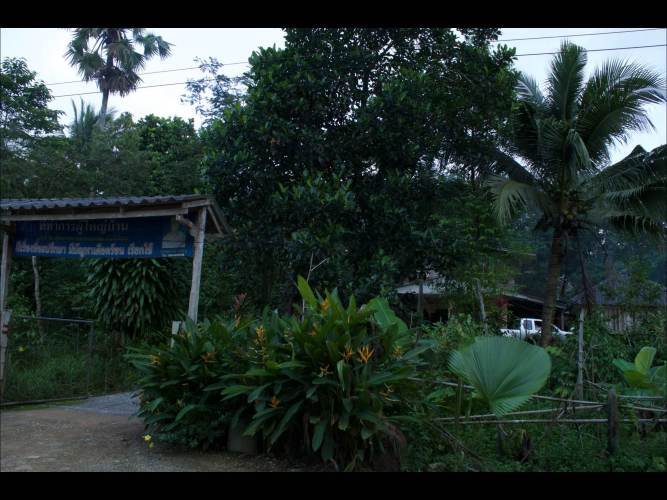

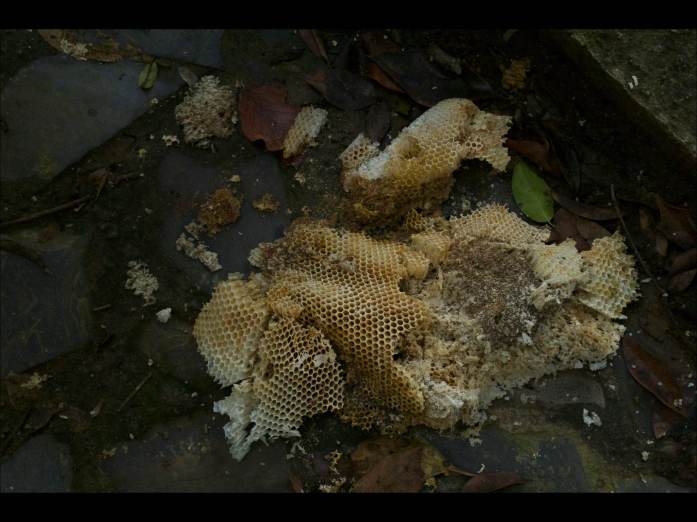
Most impressive. Well done Sol.
‘Like a moth to the flame’ extraordinary.
So glad drone now working. Splendid pictures of the canopy. John
LikeLike
Thanks John, I feel hugely lucky to be out here. Looking forward to seeing you soon! X
LikeLike